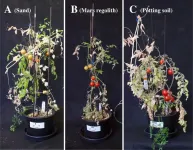(Press-News.org) Researchers say a machine learning tool can identify many patients with rare, undiagnosed diseases years earlier, potentially improving outcomes and reducing cost and morbidity. The findings, led by researchers at UCLA Health, are described in Science Translational Medicine.
“Patients who have rare diseases may face prolonged delays in diagnosis and treatment, resulting in unnecessary testing, progressive illness, psychological stresses, and financial burdens,” said Manish Butte, MD, PhD, a UCLA professor in pediatrics, human genetics, and microbiology/immunology who cares for these patients in his clinic at UCLA. “Machine learning and other artificial intelligence methods are making their way into health care. Using these tools, we developed an approach to speed the diagnosis of undiagnosed patients by identifying patterns in their electronic health records that resemble those of patients who are known to have the disorders.”
This study focused on disorders collectively called common variable immunodeficiency (CVID), which often elude diagnosis for years or decades after symptom onset because the disorders are rare, symptoms can vary greatly from person to person, and symptoms tend to overlap with those of other, more common, disorders. Additionally, the disorders in each individual are often driven by changes in only one gene – but not the same gene from one manifestation of the disorder to another – and over 60 genes have been implicated thus far. Without a single causal mechanism, there are no genetic tests to provide a definitive diagnosis.
CVID is one of the most common human inborn errors of immunity (IEI) – rare diseases that increase a person’s susceptibility to infection, autoimmunity and autoinflammation. More than 500 IEIs have been identified, and more are discovered each year. CVID, estimated to affect 1 in 25,000 people, is associated with antibody deficiencies – both quantity and function – and impaired immune responses.
Butte and Bogdan Pasaniuc, PhD, a professor of computational medicine, human genetics, and pathology and laboratory medicine at UCLA David Geffen School of Medicine, led a team that developed a machine learning tool called PheNet, borrowing from the term “phenotypes,” the observable characteristics or traits of a disease as seen in an individual. PheNet learns phenotypic patterns from verified CVID cases and uses this knowledge to rank patients by likelihood of having CVID.
“The clinical presentation of rare immune phenotypes such as CVID intersects with many medical specialties. Patients may be seen in ear, nose and throat clinics for sinus infections. They may be treated in pulmonology clinics for pneumonias. This fragmentation of care across multiple specialists leads to long delays in diagnosis and treatment. It’s impossible to teach all these busy specialists about immune deficiencies with the hopes that, even if they could recognize which patients have an underlying immune defect, they’ll refer these patients to us. We had to find a better way to find these patients,” said Butte who, with Pasaniuc, is a co-senior author of the journal article.
“Our own patients report experiencing years to decades of symptoms before they were referred to our immunology clinic,” Butte added. “With PheNet, dozens of patients could have been diagnosed one to four years earlier than they were, and by bringing patients to care years earlier, we should be able to reduce their costs and improve their health outcomes.”
Because there is no single clinical presentation for CVID, identifying an electronic health record “signature” for the disorder is not straightforward. The researchers developed their computational algorithm to infer EHR signatures from the records of patients known to have CVID and from the patterns of illnesses found in the literature. The software then computes a numerical score for each patient that rank orders the patients most likely to have CVID. Those with high scores – patients who the researchers describe as “hiding in the medical system” – would be candidates for referral to an immunology specialist.
Pasaniuc said that when the research team applied PheNet to the UCLA electronic health record data comprising millions of patient records and followed up with a blinded chart review of the top 100 patients ranked by the system, they found that 74% were deemed probable to have CVID. Based on these preliminary data, Butte and Pasaniuc successfully competed to receive $4 million of National Institutes of Health funding, which allows them to apply their AI in the real world.
They started by validating PheNet with more than 6 million records of patients from disparate medical systems in the University of California Data Warehouse and at Vanderbilt Medical Center in Tennessee. A collaboration led by Butte to have specialists see the patients identified by the algorithm was launched with the immunology clinics at University of California campuses in San Diego, Irvine, Davis, and San Francisco.
“We show that artificial intelligence algorithms such as PheNet can offer clinical benefits by expediting the diagnosis of CVID, and we expect this to apply to other rare diseases, as well,” Pasaniuc said. “Our implementation across all five University of California medical centers is already making an impact. We are now improving the precision of our approach to better identify CVID while expanding to other diseases. We will also plan to teach the system to read medical notes to glean even more information about patients and their illnesses.”
Lead author Ruth Johnson, PhD, a former member of the Pasaniuc Lab who now is a fellow at Harvard Medical School, said limitations of the current health care system can result in tunnel vision, where different doctors see different aspects of a disease but are unable to put the whole picture together. This delays diagnosis, especially for the many CVID patients who have multisystem manifestations that fluctuate over time. Artificial intelligence can overcome these obstacles.
“For every year a diagnosis is delayed, there is an increase in infections, antibiotic use, emergency room visits, hospitalizations, and missed days of work and school,” she said. “In addition to the financial and emotional toll this takes on patients and their families, the aggregate impact to the U.S. health system of failing to diagnose CVID in a timely fashion is likely to be in the millions or billions of dollars.”
Authors In addition to Butte and Pasaniuc, UCLA authors include Ruth Johnson (first author), Alexis V. Stephens, Rachel Mester, Sergey Knyazev, Lisa A. Kohn, Malika K. Freund, Leroy Bondhus, Brian L. Hill, Tommer Schwarz, Noah Zaitlen, and Valerie A. Arboleda. Lisa A. Bastarache contributed from the Department of Biomedical Informatics at Vanderbilt University.
END
Machine learning tool identifies rare, undiagnosed immune disorders through patients’ electronic health records
Earlier diagnosis has potential to improve outcomes and reduce cost and morbidity
2024-05-01
ELSE PRESS RELEASES FROM THIS DATE:
MD Anderson researcher Sharon Dent elected to prestigious National Academy of Sciences
2024-05-01
HOUSTON ― Sharon Dent, Ph.D., professor of Epigenetics and Molecular Carcinogenesis at The University of Texas MD Anderson Cancer Center, has been elected to the National Academy of Sciences (NAS). Dent is a global leader in the field of chromatin research whose foundational work has helped define the role of chromatin in cancer growth and development.
Dent is one of 120 members and 24 international members elected this year in recognition of their distinguished and continuing achievements in original research. The NAS, established in 1863 by President Abraham Lincoln, is a private, nonprofit society of distinguished scholars engaged in scientific and engineering research.
With ...
Nonmotor seizures may be missed in children, teens
2024-05-01
EMBARGOED FOR RELEASE UNTIL 4 P.M. ET, WEDNESDAY, MAY 1, 2024
MINNEAPOLIS – Children and teens may experience nonmotor seizures for months or years before being seen in an emergency department for a more obvious seizure that includes convulsions, according to a study published in the May 1, 2024, online issue of Neurology®, the medical journal of the American Academy of Neurology. Even then, the history of nonmotor seizures may not be recognized.
“Early diagnosis of epilepsy is of the utmost importance because epileptic seizures can lead to injury and even death,” said study author Jacqueline French, MD, of NYU Grossman School of Medicine ...
Emergency departments frequently miss signs of epilepsy in children
2024-05-01
A subtle type of seizure goes undetected two thirds of the time in pediatric emergency departments, a new study shows.
The work focuses on “nonmotor” seizures, which cause children to “zone out” and stare into space or fidget. They may also feel sudden changes in emotions, thoughts, or sensations, as opposed to motor seizures, which cause muscles to move in abrupt, jerking motions.
According to the authors, improving recognition of nonmotor seizures may speed up the diagnosis and treatment of epilepsy in children, ...
Unraveling the roles of non-coding DNA explains childhood cancer’s resistance to chemotherapy
2024-05-01
(MEMPHIS, Tenn. – May 01, 2024) St. Jude Children’s Research Hospital scientists have identified specific DNA variants in the non-coding regions of the genome contributing to chemotherapy resistance in acute lymphoblastic leukemia (ALL). The results guided the team to unravel the mechanism behind a previously unknown contributor to therapeutic resistance. The discovery was enabled by combining new technologies to overcome previous limitations in understanding the non-coding genome, which could be adapted to other ...
Marshall University announces new clinical trial studying the effect of ACL reconstruction on return to play in sports
2024-05-01
HUNTINGTON, W.Va. – The Marshall University Joan C. Edwards School of Medicine is now accepting applicants for an observational trial focused on fertilized anterior cruciate ligament (ACL) reconstruction.
Unlike traditional ACL repairs, fertilized ACL surgery uses a biologic concentrate of the patient’s stem cells, bone marrow and autograft bone along with an internal brace with the goal of stabilizing and expediting the healing process.
“Past patients of the fertilized ACL have already shown shorter recovery times with no known additional risks to the patient,” said Chad D. Lavender, M.D., ...
New York State is vulnerable to increasing weather-driven power outages, with vulnerable people in the Bronx, Queens and other parts of New York City being disproportionately affected
2024-05-01
New York State is vulnerable to increasing weather-driven power outages, with vulnerable people in the Bronx, Queens and other parts of New York City being disproportionately affected.
####
Article URL: https://journals.plos.org/climate/article?id=10.1371/journal.pclm.0000364
Article Title: Powerless in the storm: Severe weather-driven power outages in New York State, 2017–2020
Author Countries: United States
Funding: This work was supported by the National Institute for Environmental Health Sciences (NIEHS) P30 ES009089 ...
Time-restricted eating and high-intensity exercise might work together to improve health
2024-05-01
Combining time-restricted eating with high-intensity functional training may improve body composition and cardiometabolic parameters more than either alone, according to a study published May 1, 2024 in the open-access journal PLOS ONE by Ranya Ameur and Rami Maaloul from the University of Sfax, Tunisia, and colleagues.
Changes in diet and exercise are well-known ways to lose weight and improve cardiometabolic health. However, finding the right combination of lifestyle changes to produce sustainable results can be challenging. Prior studies indicate that time-restricted eating (which limits when, but not what, individuals eat) and ...
Simulations of agriculture on Mars using pea, carrot and tomato plants suggest that intercropping, growing different crops mixed together, could boost yields in certain conditions
2024-05-01
Simulations of agriculture on Mars using pea, carrot and tomato plants suggest that intercropping, growing different crops mixed together, could boost yields in certain conditions
###
Article URL: https://journals.plos.org/plosone/article?id=10.1371/journal.pone.0302149
Article Title: Intercropping on Mars: A promising system to optimise fresh food production in future martian colonies
Author Countries: The Netherlands
Funding: The author(s) received no specific funding for this work. END ...
New computer algorithm supercharges climate models and could lead to better predictions of future climate change
2024-05-01
Earth System Models – complex computer models which describe Earth processes and how they interact – are critical for predicting future climate change. By simulating the response of our land, oceans and atmosphere to manmade greenhouse gas emissions, these models form the foundation for predictions of future extreme weather and climate event scenarios, including those issued by the UN Intergovernmental Panel on Climate Change (IPCC).
However, climate modellers have long faced a major problem. Because Earth System Models integrate many complicated processes, they cannot immediately run a simulation; they must first ensure that it has reached a stable equilibrium ...
These communities are most vulnerable to weather-related power outages in New York State
2024-05-01
Weather-related power outages in the United States have become nearly twice as common in the last ten years compared to the previous decade. These outages, which can last most of a day, are more than an inconvenience: lack of power and related indoor temperature discomfort can exacerbate health conditions; lack of power also endangers the lives of people who are reliant on electricity-powered medical devices and/or elevators.
A new study led environmental health scientists at Columbia University ...
LAST 30 PRESS RELEASES:
Scientists boost cell "powerhouses" to burn more calories
Automatic label checking: The missing step in making reliable medical AI
Low daily alcohol intake linked to 50% heightened mouth cancer risk in India
American Meteorological Society announces Rick Spinrad as 2026 President-Elect
Biomass-based carbon capture spotlighted in newly released global climate webinar recording
Illuminating invisible nano pollutants: advanced bioimaging tracks the full journey of emerging nanoscale contaminants in living systems
How does age affect recovery from spinal cord injury?
Novel AI tool offers prognosis for patients with head and neck cancer
Fathers’ microplastic exposure tied to their children’s metabolic problems
Research validates laboratory model for studying high-grade serous ovarian cancer
SIR 2026 delivers transformative breakthroughs in minimally invasive medicine to improve patient care
Stem Cell Reports most downloaded papers of 2025 highlight the breadth and impact of stem cell research
Oxford-led study estimates NHS spends around 3% of its primary and secondary care budget on the health impacts of heat and cold in England
A researcher’s long quest leads to a smart composite breakthrough
Urban wild bees act as “microbial sensors” of city health.
New study finds where you live affects recovery after a hip fracture
Forecasting the impact of fully automated vehicle adoption on US road traffic injuries
Alcohol-related hospitalizations from 2016 to 2022
Semaglutide and hospitalizations in patients with obesity and established cardiovascular disease
Researchers ‘listen in’ to embryo-mother interactions during implantation using a culture system replicating the womb lining
How changing your diet could help save the world
How to make AI truly scalable and reliable for real-time traffic assignment?
Beyond fragmented markets: A new framework for efficient and stable ride-pooling
Can shape priors make road perception more reliable for autonomous driving?
AI tracks nearly 100 years of aging research, revealing key trends and gaps
Innovative techniques enable Italy’s first imaging of individual trapped atoms
KIER successfully develops Korea-made “calibration thermoelectric module” for measuring thermoelectric device performance
Diversifying US Midwest farming for stability and resilience
Emphasizing immigrants’ deservingness shifts attitudes
Japanese eels, climate change, and river temperature
[Press-News.org] Machine learning tool identifies rare, undiagnosed immune disorders through patients’ electronic health recordsEarlier diagnosis has potential to improve outcomes and reduce cost and morbidity




